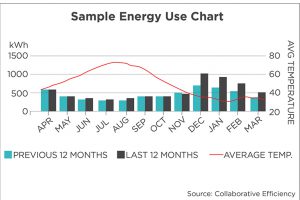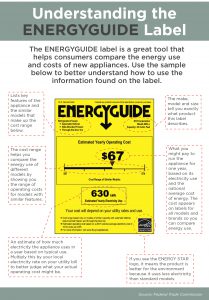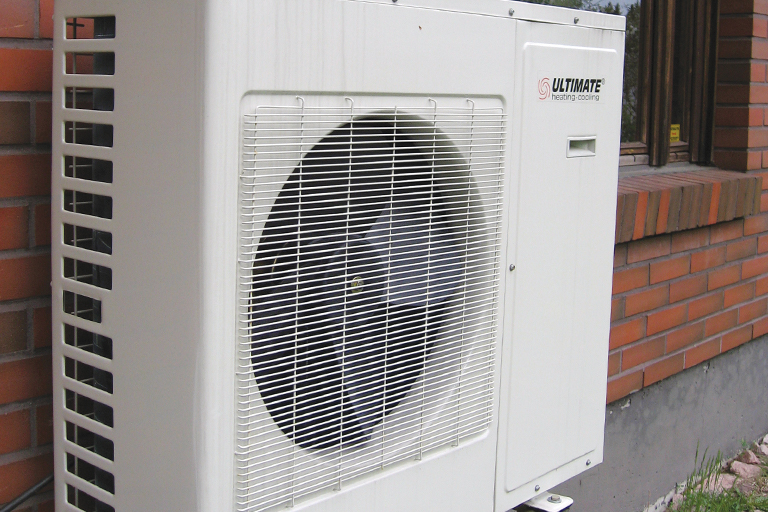By Pat Keegan and Brad Thiessen
It’s always a good idea to understand how you’re spending your money. You look over your credit card statement carefully each month, so you should do the same with your utility bills. As you’d suspect, analyzing your bill can help you save energy and money.
If you live in an all-electric home, all of your home energy costs will be on the monthly bill from your electric cooperative. This bill will probably have one or more fixed charges that cover some of the costs your co-op incurs in delivering the power to your home.
Beyond these fixed fees, you will pay for the power you used that month, which is sold in kilowatt-hour units. One kWh is equal to 1,000 watts over a one-hour period. Think of 10 100-watt lights that are used for one hour. Most electric co-ops charge the same rate for a kWh no matter when you use it, but some offer a time-of-use rate that is higher during peak energy hours –– when the wholesale price of electricity is higher because there’s greater demand. Some co-ops have different rates for different use tiers, so the rate could be higher or lower as monthly use increases. Electric rates can also vary by season and cost more during high-use months.
If you are charged more for energy use during on-peak hours, you can often adjust the time you use certain appliances and equipment, like your dishwasher, air conditioner, clothes washer or oven, to off-peak hours. This won’t reduce your electric use, but it can save you money if your co-op offers a time-of-use rate.

Most energy bills include an annual energy use chart, which can provide clues to identify areas of energy efficiency opportunities. Photo Credit: Collaborative Efficiency
Most energy bills include a chart that shows your electric use over the past 12 months. If your home is electrically heated, you will see how much your use goes up in the winter. This chart can also show how much your use goes up during the summer when you run your air conditioner.
Your electric co-op may offer tools on their website to help you track energy use and estimate how much you use for space heating, air conditioning and water heating, which are often the three largest energy uses. Knowing how much you spend on heating or cooling can help you determine how much you might save by installing a new heat pump or other energy efficiency upgrade.
 Some co-ops also offer online energy audit tools that provide ways to reduce energy costs based on a detailed set of questions about your home. If your co-op doesn’t offer an online audit tool or if you want a different perspective, you can try the ENERGYSTAR Home Energy Yardstick. This resource can give you a good idea of your space heating and cooling use. Just total up your average electricity use for the months when you use the most energy and subtract the average amount you use in “shoulder months” when you’re not cooling or heating your home. The difference is likely the amount you pay each month for heating and cooling.
Some co-ops also offer online energy audit tools that provide ways to reduce energy costs based on a detailed set of questions about your home. If your co-op doesn’t offer an online audit tool or if you want a different perspective, you can try the ENERGYSTAR Home Energy Yardstick. This resource can give you a good idea of your space heating and cooling use. Just total up your average electricity use for the months when you use the most energy and subtract the average amount you use in “shoulder months” when you’re not cooling or heating your home. The difference is likely the amount you pay each month for heating and cooling.
If someone says switching to a new heating or cooling system could save you 20 percent, they may mean you can save 20 percent on heating or cooling costs. Some homes also have significant uses besides heating and cooling that increase their winter or summer bills, like a well pump, spa or swimming pool.
You may receive a separate monthly bill for natural gas, or for propane or heating oil which might be delivered on an as-needed, keep-filled basis. The Home Energy Yardstick can accommodate any type of fuel you use in your home.
This information should help you analyze your energy bill and give you some general ideas on how you might cut your energy expenses. The best way to turn these ideas into specific actions is to conduct an energy audit of your home. Contact your electric co-op to see if they offer energy audits or if they can recommend a local professional.
This column was co-written by Pat Keegan and Brad Thiessen of Collaborative Efficiency.

